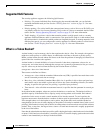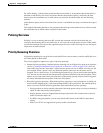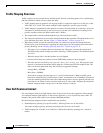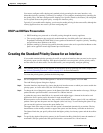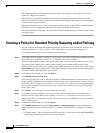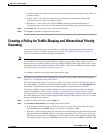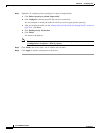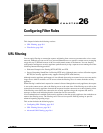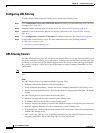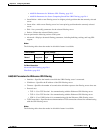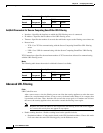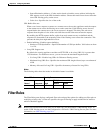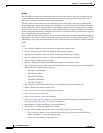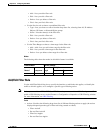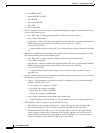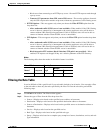
26-2
Cisco ASDM User Guide
OL-16647-01
Chapter 26 Configuring Filter Rules
URL Filtering
Configuring URL Filtering
To enable filtering with an external filtering server, perform the following steps.
Step 1 Go to Configuration > Firewall > URL Filter Servers to specify an external filtering server. See URL
Filtering Servers, page 26-2.
Step 2 (Optional) Buffer responses from the content server. See Advanced URL Filtering, page 26-4.
Step 3 (Optional) Cache content server addresses to improve performance. See Advanced URL Filtering,
page 26-4
Step 4 Go to Configuration > Firewall > Filter Rules to configure filter rules. See Filter Rules, page 26-5.
Step 5 Configure the external filtering server. For more information refer to the following websites:
• http://www.websense.com
• http://www.securecomputing.com
URL Filtering Servers
The URL Filtering Servers pane lets you specify the external filter server to use. You can identify up to
four of the same type of filtering servers per context. In single mode a maximum of 16 of the same type
of filtering servers are allowed. The security appliance uses the servers in order until a server responds.
You can only configure a single type of server (Websense or Secure Computing SmartFilter) in your
configuration.
Note You must add the filtering server before you can configure filtering for HTTP, HTTPS, or FTP filtering
rules.
Fields
The URL Filtering Server Type area includes the following fields:
• Websense—Enables the Websense URL filtering servers.
• Secure Computing SmartFilter—Enables the Secure Computing SmartFilter URL filtering server.
• Secure Computing SmartFilter Port—Specifies the Secure Computing SmartFilter port. The default
is 4005.
The URL Filtering Servers area includes the following fields:
• Interface—Displays the interface connected to the filtering server.
• IP Address—Displays the IP address of the filtering server.
• Timeout—Displays the number of seconds after which the request to the filtering server times out.
• Protocol—Displays the protocol used to communicate with the filtering server.
• TCP Connections—Displays the maximum number of TCP connections allowed for communicating
with the URL filtering server.
• Add—Adds a new filtering server, depending on whether you have selected Websense or Secure
Computing SmartFilter. See the following topics for more information:



